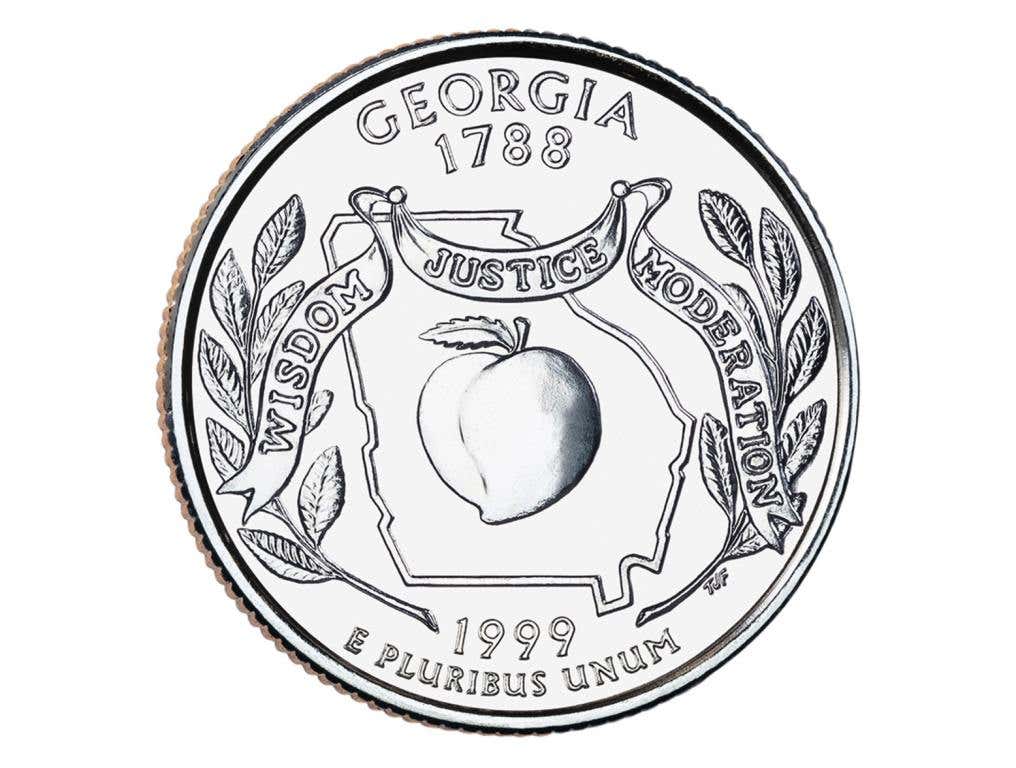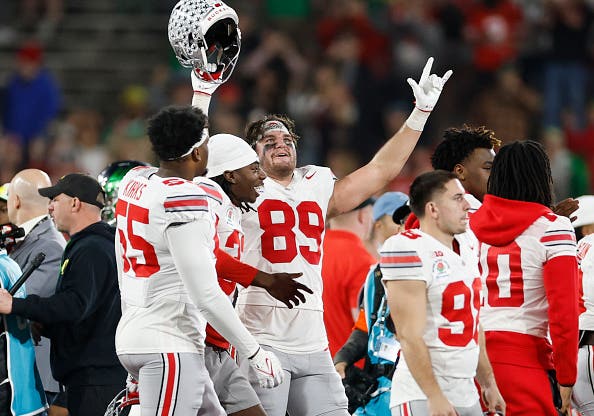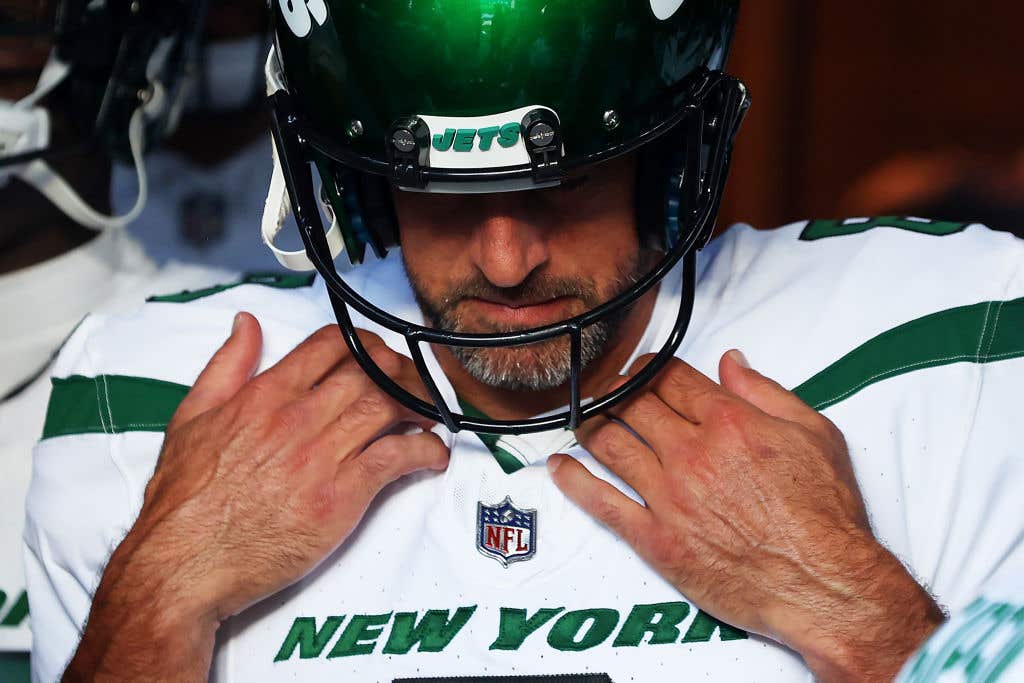
Time to open up those change jars again, I've got one for you to check for. Earlier this week we talked about the 1999 penny error that could net you thousands. Today we'll discuss the 1999 Georgia Quarter. And really, this mistake applies to any of the state quarters. So instead of dumping all your change into the Coinstar machine at the Fort Myers Publix, let's see if any of these coins are worth some real money.
In this case, the mistake coins were actually done on purpose. It happened in Philadelphia during the minting of the 1999 Georgia, Delaware, New Jersey, Connecticut, and Pennsylvania quarters. The US Mint in Philly was experimenting with different alloys. They came up with an alloy that had a gold tint. It's the alloy the eventually used on the Sacagawea one dollar coins from 2000.
From GoBanking Rates "Curious how the alloy would look on quarters, a bunch of Georgia state ones were minted using it.” they ended up not going with a different alloy, but they still released the quarters with the other alloy. If you don't remember, here's what the Sacagawea one dollar coin looked like.
Compare that goldish tint to the picture of the Georgia quarter and you'll see what we're looking for. So if you see one of the state quarters and it looks a little different, and feels a little heavier, you may have one. Some of the coins sold at auction include a Delaware one for $3,450. A Pennsylvania one for $9,775. 4 others ones had a selling range of $3,000 - $6,000.
So take a closer look at any Georgia quarter or other state quarters you may have from 1999.
And if you think you have one, take it somewhere local to get it appraised. I'm always leery of the online places that say "send it in and we'll tell you if it's worth something."
The 2023 Hurricane Names List is Out And One Of Them Is “Lee”
This can't be good. The 2023 Hurricane Names list is out. It looks like it's already time to start thinking about the hurricane season in Southwest Florida. But why did they have to name one of this year's storms "Lee"? Like Lee County wasn't punished enough last year, let's go ahead and do this.
The National Hurricane Center is making a change to reporting of the storms for the 2023 season. Instead of the usual 5 day, they're switching to a 7-day tropical weather outlook. More info and a longer timeline is always better. The yellow, orange, and red color coding for development will not change and we'll still get regular updates at 2 p.m., 8 p.m., 2 a.m. and 8 a.m. EDT.
As far as the names go, they use a list that repeats every 6 years minus the really bad ones. The 2017 season was ugly. The season featured 17 named storms, 10 hurricanes, and 6 major hurricanes. Three of the names that year were retired, Harvey, Irma and Maria. You'll certainly remember Irma as it hit Southwest Florida near Marco Island as a Category 3 hurricane with winds of 115 mph. The name 'Irma' has been retired. Then there was last year's Ian. This year's 'I' storm will be named Idalia. I'm not sure how to pronounce that and here's to hoping we don't have to learn.
Here's the 2023 Hurricane Names, and a fact about that last time each name was used.
Arlene
In 2017, Tropical Storm Arlene formed on April 16. It was not a major storm, but it kinda let us know what was coming.
Bret
The 2017 version of Bret targeted Venezuela in June.
Cindy
The 2017 Tropical Storm Cindy targeted Louisiana, spawned tornadoes, and killed 3.
Don
In July of 2017, Tropical Storm Don formed but didn't last.
Emily
2017 Emily directed effected us. Heavy rainfall produced by Emily caused widespread flooding in Polk and Pinellas counties. Coastal flooding was reported in Hillsborough, Manatee, Sarasota, Lee, and Collier counties, causing additional road closures. A tornado touched down Bradenton, destroying two barns and multiple greenhouses. The storm indirectly led to flooding in Miami where 6.97 in of rain fell in 3.5 hours.
Franklin
The 2017 Hurricane Franklin hit central America on July 27th.
Gert
The 2017 Hurricane Gert skirted by North Carolina's Outer Banks and then set it's sights on - Ireland. That's right, Gert looped all the way back around and was responsible for flooding in Ireland.
Harold
Harold is new to list after the 2017 Harvey was retired. However, the name Harold has been used before. Severe Tropical Cyclone Harold was a very powerful tropical cyclone which caused widespread destruction in the Solomon Islands, Vanuatu, Fiji, and Tonga during April 2020.
Idalia
The next new name to the list. NOAA actually a pronunciation list. Idalia ee-DAL-ya. Maybe the I storm can skip us this year.
Jose
2017 Hurricane Jose was massive and nearly a category 5. But then, a large mid-latitude low-pressure area offshore Atlantic Canada and the circulation associated with Hurricane Irma resulted in the collapse of steering currents, causing Jose to decelerate and execute a cyclonic loop. Off to sea.
Katia
Katia KAH-tyah
In September of 2017, Katia struck Mexico just days after a major earthquake struck the country
Lee
On September 26, 2017 Hurricane Lee became a Cat 2 but was never a threat to land. I do wish, however, that NHC would consider not using the name seeing as how large portions of Lee County are still a mess from last year. It's not like we need the reminder.
Margot
A new name after the 2017 Maria name was retired. I'm assuming they picked the name Margot after watching Christmas Vacation. If a Hurricane Margot forms this year, I'd expect memes.
Nigel
Clearly a Spinal Tap reference. Again, expect memes.
Ophelia
In 2017, Ophelia went to the right. On October 16, Ophelia ceased to be a tropical cyclone after merging with a strong cold front about 310 mi southwest of Mizen Head, Ireland. The extratropical low made landfall on the west coast of Ireland at Category 1-equivalent intensity later that day, several hours before striking northern Scotland.
Phillipe
Philippe fee-LEEP
The 2017 Tropical Storm Philippe spawned three tornadoes in southeastern Florida. One of those damaged dozens of homes in Boynton Beach, while another produced a wind gust of 74 mph in West Palm Beach.
Rina
Rina REE-nuh
2017 Tropical Storm Rina formed on November 7th and did not make landfall.
Sean
Rina was the last named storm of 2017. The 2011 Tropical Storm Sean was the last named storm of 2011. It formed on November 8th and didn't amount to much.
Tammy
Let's just hope we don't get this far.
Vince
Hopefully not needed.
Whitney
That's the last on the list. Here's to hoping we don't need them.
Resources
Some info from Wikipedia was used. The names list comes from the National Hurricane Center. They've actually posted a preliminary list all the way through 2027 but will make updates if any of the names are retired.





